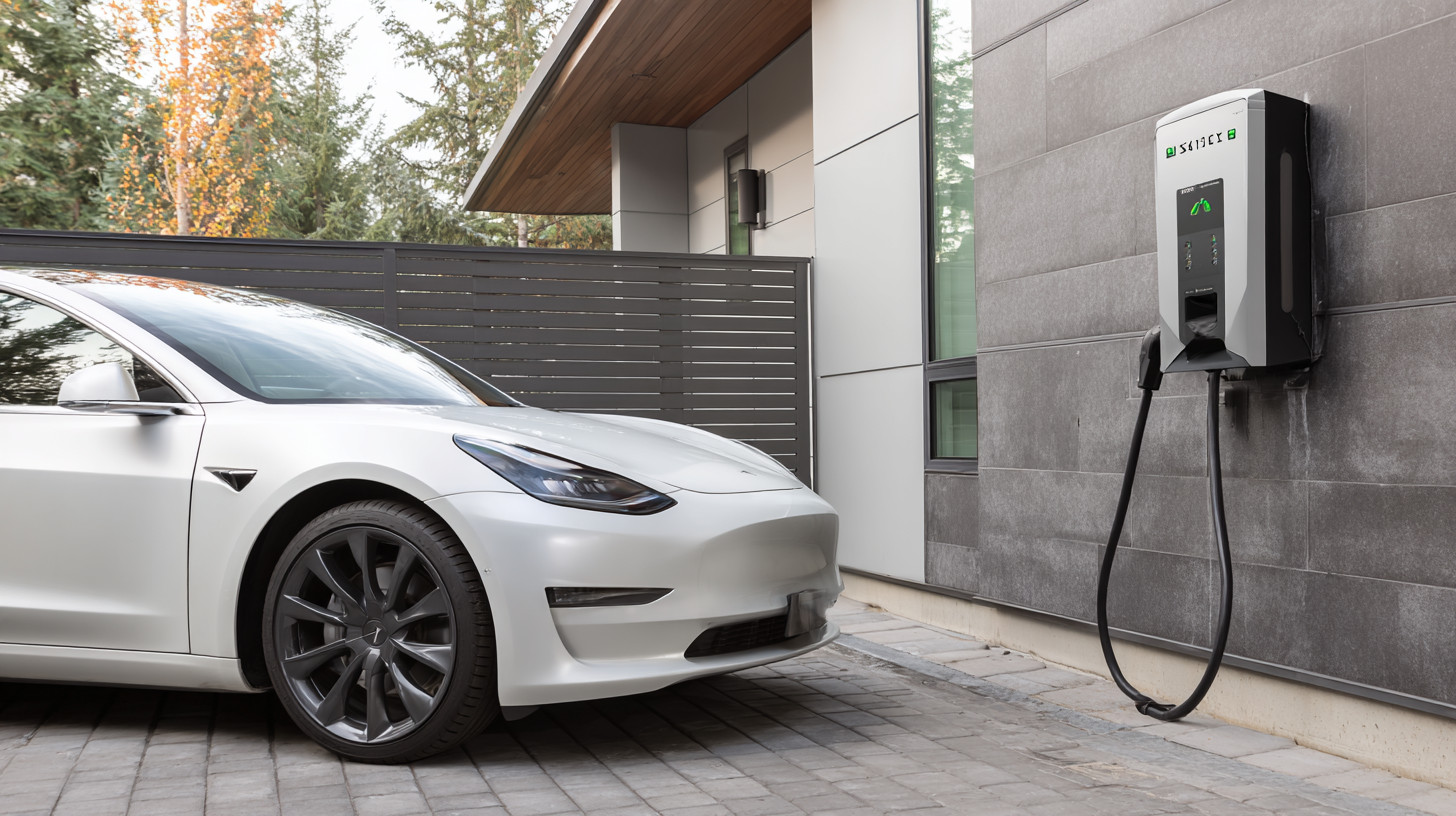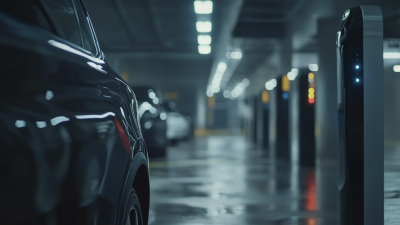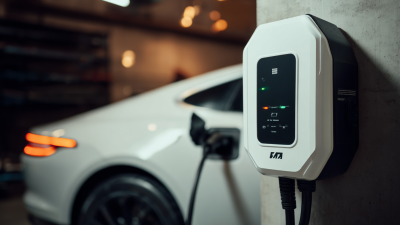10 Best Electric Charger Installation Tips for Homeowners in 2023
As the adoption of electric vehicles (EVs) continues to accelerate, homeowners are increasingly faced with the need for efficient Electric Charger Installation to support their green initiatives and convenience. According to a recent report by the International Energy Agency, the global electric car stock reached a remarkable 10 million in 2020, showcasing a growth rate of 43% from the previous year. This rapid increase underlines the necessity for adequate charging infrastructure in residential areas—a factor critical in facilitating the transition to sustainable transportation.

The installation of home charging stations not only enhances the convenience of owning an EV but also provides homeowners with potential financial benefits. A study by the U.S. Department of Energy highlighted that charging at home can save EV owners up to 50% compared to gasoline costs over time. However, to optimize charging efficiency and ensure safety, proper installation techniques and adherence to electrical guidelines are paramount. This article will explore the ten best practices for Electric Charger Installation tailored for homeowners in 2023, empowering them to make informed decisions as they navigate this vital aspect of EV ownership.
Choosing the Right Location for Your Electric Charger Installation
When it comes to installing an electric vehicle charger at home, choosing the right location is crucial for efficiency and convenience. Firstly, assess the proximity of your parking area to the electrical panel. Ideally, the charger should be installed within a reasonable distance to minimize the length of the electrical wiring and reduce installation costs. Additionally, consider whether the charger will be used indoors or outdoors. Outdoor installations require weather-resistant equipment and should be placed in an area that is easily accessible, yet secured from potential vandalism.
Another factor to consider is the layout of your driveway or garage. Ensure that the charger is in a location that allows easy access to your vehicle's charging port without requiring complicated maneuvers. It can be beneficial to position the charger near existing utilities or light fixtures to simplify installation and enhance safety. Lastly, think about future accessibility needs; placing the charger in a versatile location allows for greater flexibility, should you decide to acquire an additional electric vehicle or upgrade in the future. Making informed decisions about the location can facilitate a smoother charging experience for years to come.
Understanding Different Types of Electric Vehicle Chargers Available
When considering the installation of electric vehicle (EV) chargers at home, it's essential for homeowners to understand the different types available, as this choice can significantly impact charging efficiency and cost. The three primary types of chargers are Level 1, Level 2, and DC Fast Chargers. Level 1 chargers use a standard 120-volt outlet and are suitable for overnight charging, providing about 3-5 miles of range per hour. In contrast, Level 2 chargers, which utilize a 240-volt outlet, can deliver 10-60 miles of range per hour, making them ideal for daily use among EV owners. According to the U.S. Department of Energy, over 80% of EV owners opt for Level 2 charging setups, highlighting their popularity for home installations.
DC Fast Chargers are the rapid charging solution, capable of providing 60-100 miles of range within 20-30 minutes. However, these chargers are primarily suited for commercial settings due to their high cost and power requirements. A report from the International Energy Agency indicated that the market for Level 2 chargers is expected to expand by over 30% annually through 2025, driven by increased EV adoption and the need for more accessible charging solutions. Understanding these options enables homeowners to make informed decisions about which charging system fits their driving habits and home infrastructure best.

The Importance of Electrical Capacity for Home Charging Stations
When installing an electric vehicle (EV) charger at home, homeowners must prioritize the electrical capacity of their systems. As the adoption of electric vehicles surges, understanding the demand for power becomes crucial. Many homes may require upgrades to their electrical infrastructure, ensuring they can support the additional load that comes with EV charging. Recent studies indicate that public charging stations have doubled, highlighting a growing reliance on home chargers, which makes having adequate electrical capacity even more important for homeowners.
With advancements in technology, the latest home charging stations now offer features like dynamic load balancing and smart home integration. This not only aids in managing the power efficiently but also allows users to charge their vehicles during off-peak hours, optimizing energy costs. As electric utilities adapt to this rising demand, they play a vital role in guiding homeowners towards effective upgrades in their electrical systems, further enhancing the experience of EV ownership while promoting stability within the broader energy grid.
Hiring a Qualified Electrician for Safe Installation
 When considering the installation of an electric charger at home, the importance of hiring a qualified electrician cannot be overstated. A licensed professional brings not only expertise but also a deep understanding of local electrical codes and regulations, ensuring that the installation meets all safety standards. This is essential to prevent hazards such as electrical fires or equipment damage, which can arise from improper installation. A qualified electrician will assess your home's electrical system, ensuring it can handle the additional load required by the charger, and make necessary upgrades if needed.
When considering the installation of an electric charger at home, the importance of hiring a qualified electrician cannot be overstated. A licensed professional brings not only expertise but also a deep understanding of local electrical codes and regulations, ensuring that the installation meets all safety standards. This is essential to prevent hazards such as electrical fires or equipment damage, which can arise from improper installation. A qualified electrician will assess your home's electrical system, ensuring it can handle the additional load required by the charger, and make necessary upgrades if needed.
Moreover, the process of choosing the right charger and determining the optimal installation location requires technical knowledge that a certified electrician possesses. They can provide valuable insights on the best type of charger suited for your vehicle, as well as recommendations for placement that will promote efficiency and convenience. By entrusting this task to a seasoned electrician, homeowners not only prioritize safety but also enhance the overall performance of their electric vehicle charging setup. Ultimately, investing in professional installation leads to a more reliable and functional charging experience.
Maintenance Tips for Keeping Your Charger in Optimal Condition
Maintaining your electric charger is essential to ensure it operates efficiently and safely. Regular inspections are crucial; homeowners should examine the charger for any signs of wear or damage, such as frayed cables or corrosion. It's advisable to clean the charging station periodically, using a soft cloth to remove dust and debris. Keeping the area around the charger clear not only promotes safety but also prevents potential overheating.
In addition to physical upkeep, software updates for smart chargers should not be overlooked. Manufacturers often release updates that improve functionality and security. By ensuring that your charger’s software is up-to-date, you can protect it from potential vulnerabilities and enhance its performance. Lastly, consider scheduling professional check-ups annually, especially if your charger is used frequently. These maintenance habits will prolong the lifespan of your electric charger and provide you with peace of mind.
10 Best Electric Charger Installation Tips for Homeowners in 2023 - Maintenance Tips for Keeping Your Charger in Optimal Condition
| Tip No. | Maintenance Tip | Frequency | Estimated Time | Notes |
|---|---|---|---|---|
| 1 | Inspect charging cables for damage | Monthly | 15 minutes | Replace any frayed cables immediately |
| 2 | Clean connectors and ports | Bi-monthly | 10 minutes | Use a soft brush and cloth |
| 3 | Check for firmware updates | Quarterly | 20 minutes | Keep charger up-to-date for efficiency |
| 4 | Ensure proper ventilation | Monthly | 5 minutes | Avoid blocking air vents |
| 5 | Monitor charging speed | Monthly | 10 minutes | Slow charging may indicate issues |
| 6 | Verify outlet and circuit functionality | Annually | 30 minutes | Check for proper grounding |
| 7 | Inspect installation for safety standards | Every 6 months | 25 minutes | Consult a professional if needed |
| 8 | Assess environmental factors | Seasonally | 15 minutes | Ensure no extreme temperatures affect performance |
| 9 | Review user manual for guidelines | As needed | 30 minutes | Stay informed on updates and recommendations |
| 10 | Schedule a professional inspection | Annually | 1 hour | Ensure optimal performance and safety |
Related Posts
-

Global Market Insights 2025: Navigating the Future of EV Home Chargers for Savvy Buyers
-

Choosing the Right Electric Charger Installation Provider How to Evaluate Quality and Performance Based on Industry Standards
-

Advantages of Choosing Ev Home Charger Installation for Global Buyers
-

Unlocking Efficiency: The Future of Global Electric Charger Installations
-

China's Resilient Growth in EV Charging Point Installation Amid US China Tariff Challenges
-

Finding the Right Manufacturer for Your Best Ev Home Charger Through Comparison Techniques
